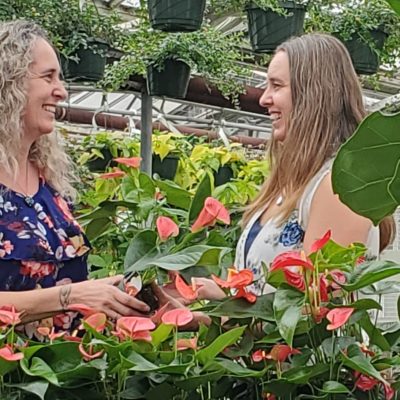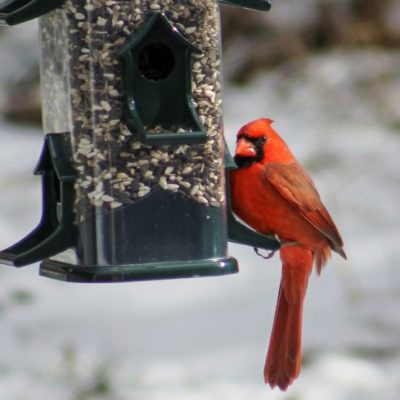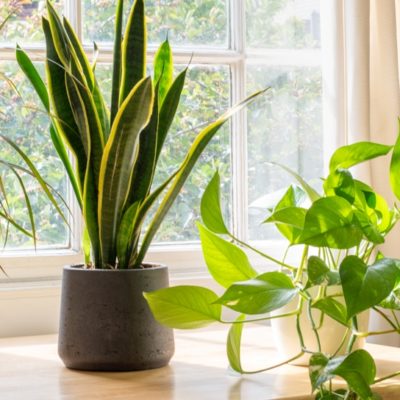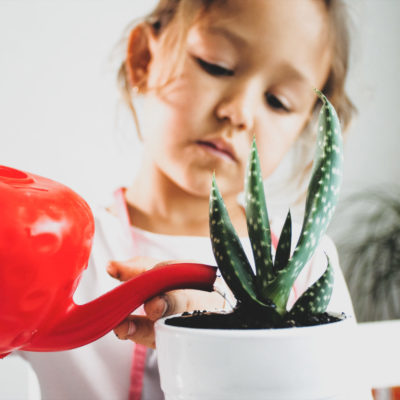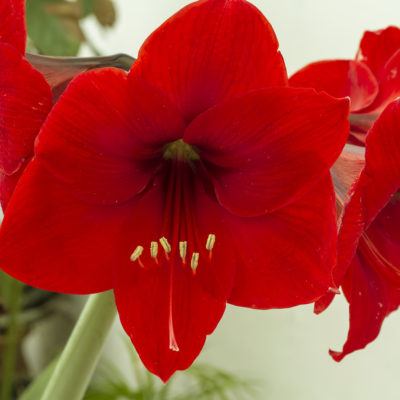
Time to Bring in Your Tropical Houseplants!
Autumn! An amazing season filled with gorgeous colours, cozy sweaters, and pumpkin spiced everything. While the cooler temperatures are a pleasant change from the summer heat, your tropical houseplants will need to spend their days and nights indoors until next summer. Here are our top tips for transitioning your trops:
When: We like to use Labour Day as a reminder to bring all of our tropicals indoors, though you can bring them in any time before the mercury drops below 10°C. This is especially important for those night-time temperatures that can potentially damage or stress your plants.
Where: Choosing an indoor location for your tropical houseplants is very important, as they’ll be staying there for the next three seasons. Be sure to keep them away from any drafts including windows, doors, and air vents, and check your plants for their individual light requirement. Here are our definitions of different sunlight levels:
Low Light* = diffused/indirect light, such as a north or east facing window or one with sheer curtains.
Medium and/or Indirect Light = bright location with indirect light; the sun’s rays do not shine directly into the space.
Bright Light = Bright/direct light, usually a south or southwest facing window; a bright and sunny spot with sunlight directly hitting the plants.
* Many plant varieties listed under the “Low Light” category can actually handle a wide range of lighting conditions, from low light all the way to bright direct light. Check the plant’s tags or use our plant search page to find out what your plant prefers!
What’s happening to the plant? Most of your plants will go through a period of stress as they readjust to being back indoors, usually by sacrificing some of their foliage. Their leaves will turn yellow/brown before falling off but don’t worry, this is completely normal! Your plants should balance themselves out after a few weeks. You can help them by offering the light, water, and warmth that they require, and a daily misting for those varieties that need the extra humidity — this last part is very important as we start heating our homes, as furnaces and heaters quickly dry out the air.
Tips: Besides the obvious reason for bringing your tropical plants indoors (you know, that whole Canadian winter/freezing thing) autumn is also a great time for pruning. As mentioned above, your plants are already dealing with the stress of relocation by dropping their leaves, and pruning at this time will help them conserve their energy and allow more light to reach the middle of the plant. If your flowering houseplants (like Bougainvillea and Hibiscus) still have gorgeous blooms then you can wait and enjoy the show before trimming back their branches once they’ve stopped producing buds.
Autumn not only brings about cooler temperatures but also shorter days. Less sunlight means less energy for your plants to absorb, so they’ll naturally slow their growth to conserve energy. This means that it’s up to you to alter your watering and fertilizing habits accordingly. Some varieties may use significantly less water during the fall and winter months; make sure to check your plants’ moisture content often but only watering when needed. Tropical plants that were demanding deep, daily waterings when they were outside in the summer heat may now go 5 to 10 days between waterings in winter! This extended period between waterings also means less need for fertilizer, so instead of feeding your tropicals every month you’ll probably be down to every two months or more.

